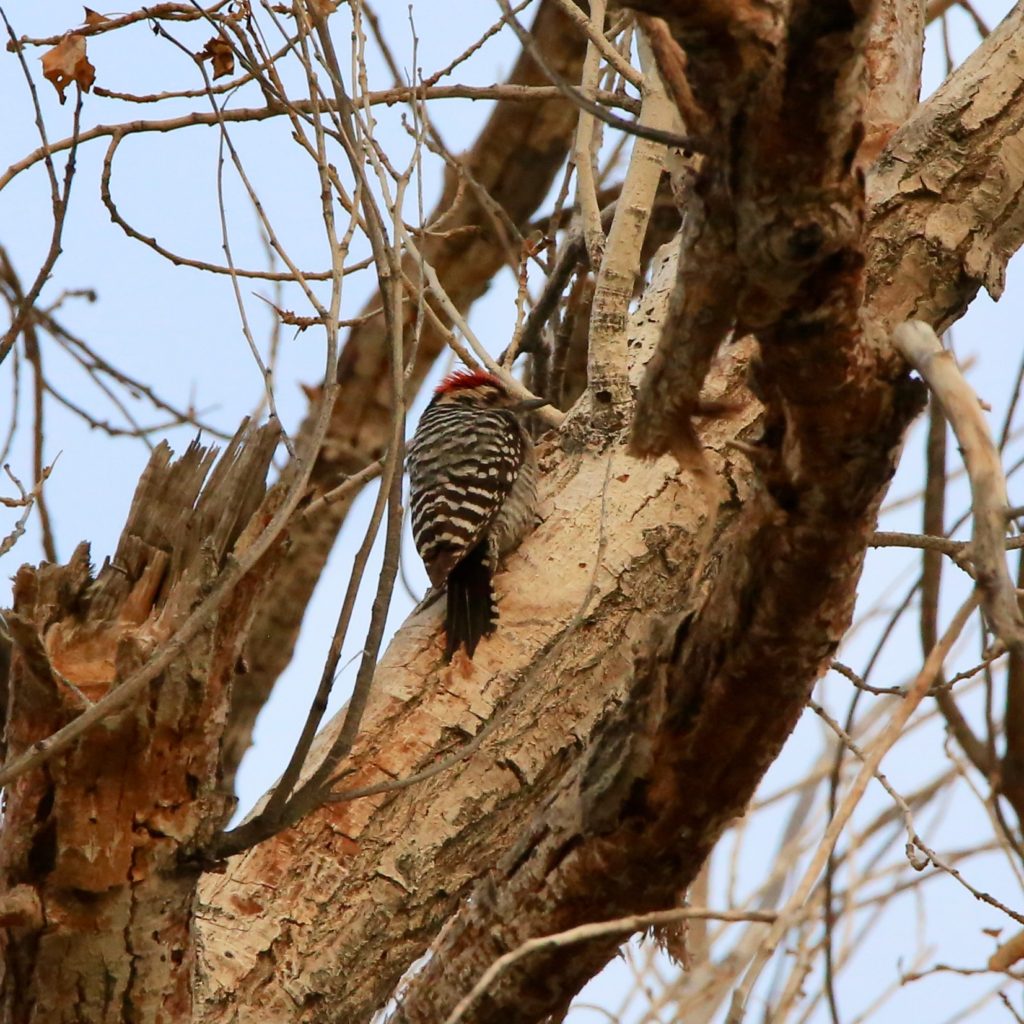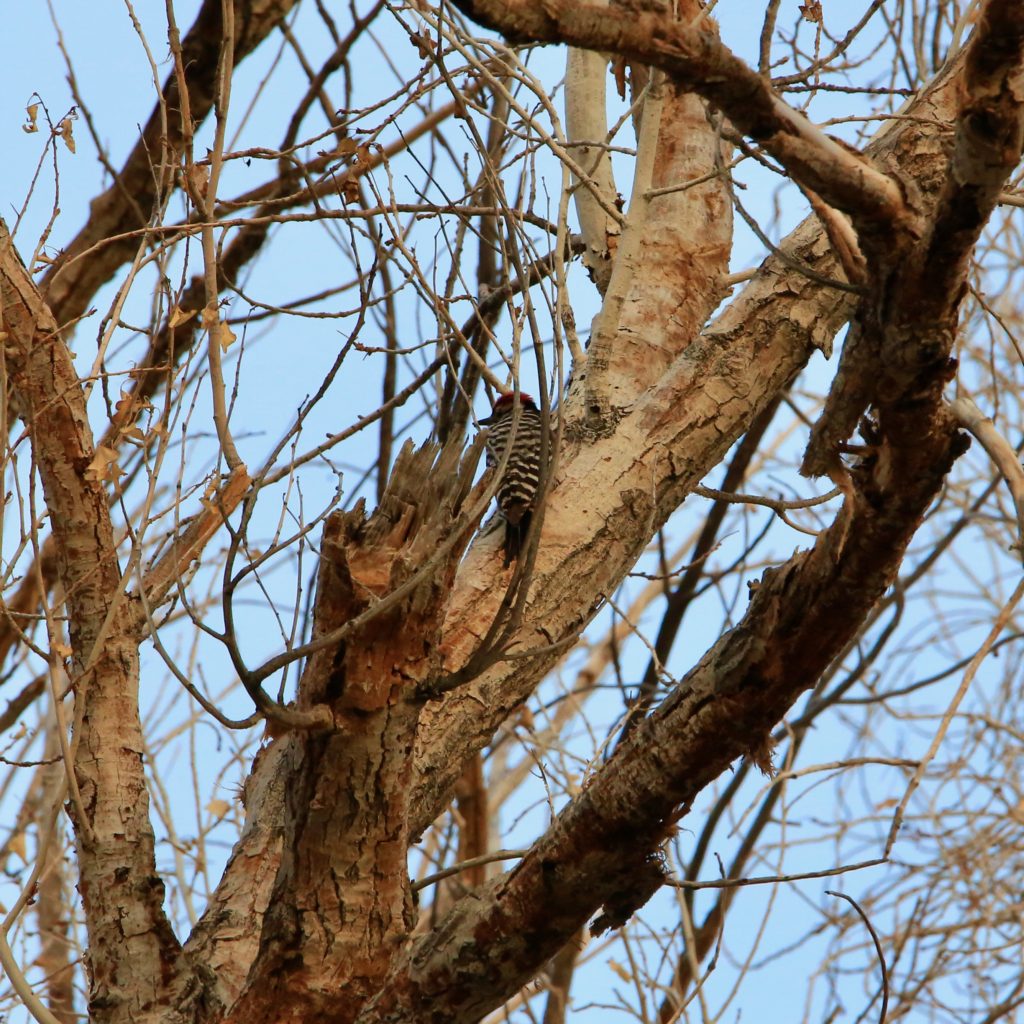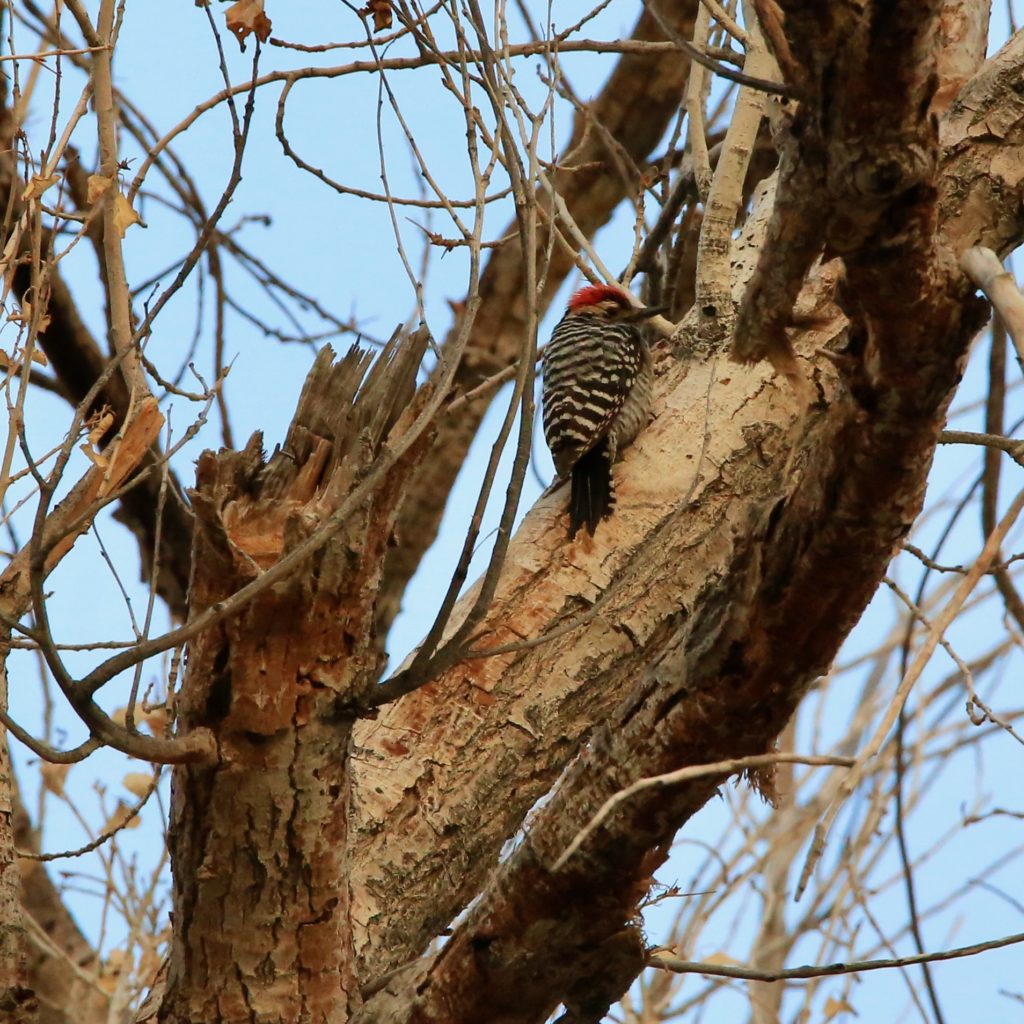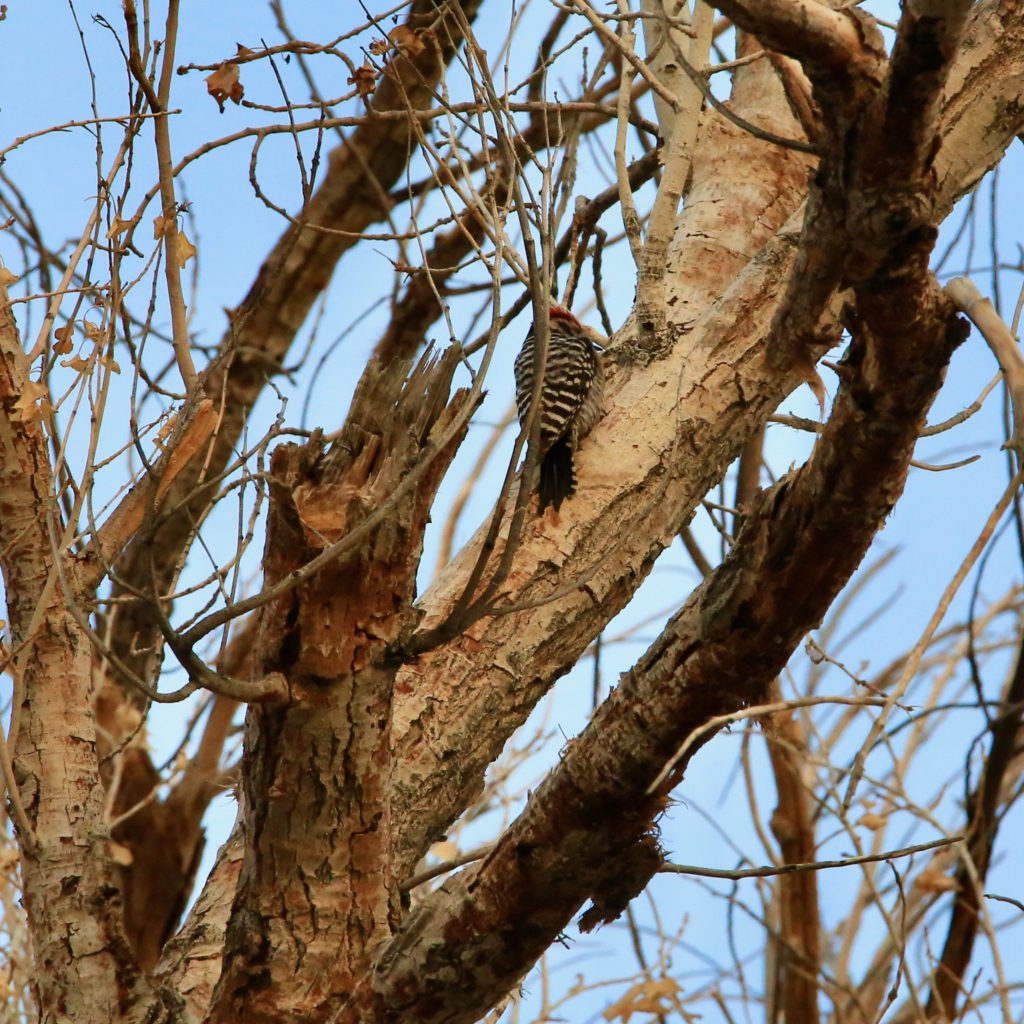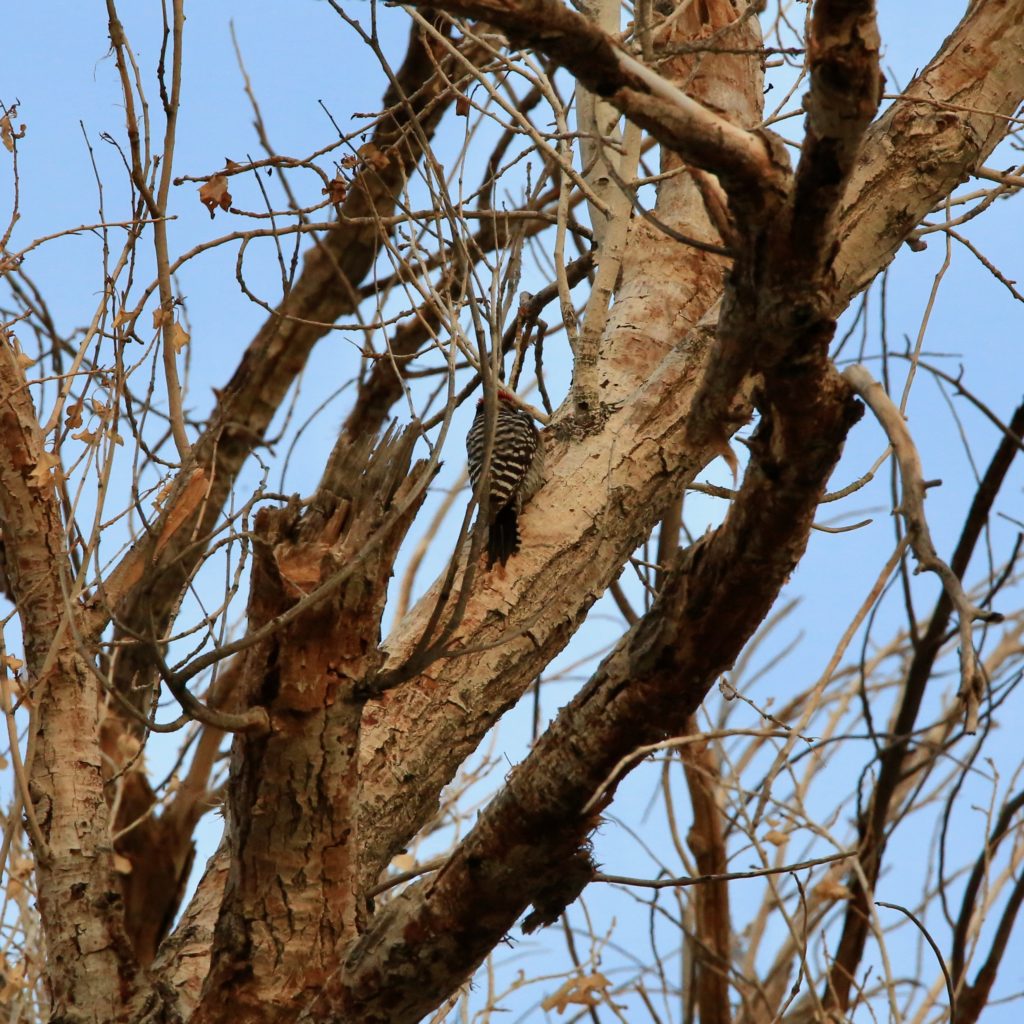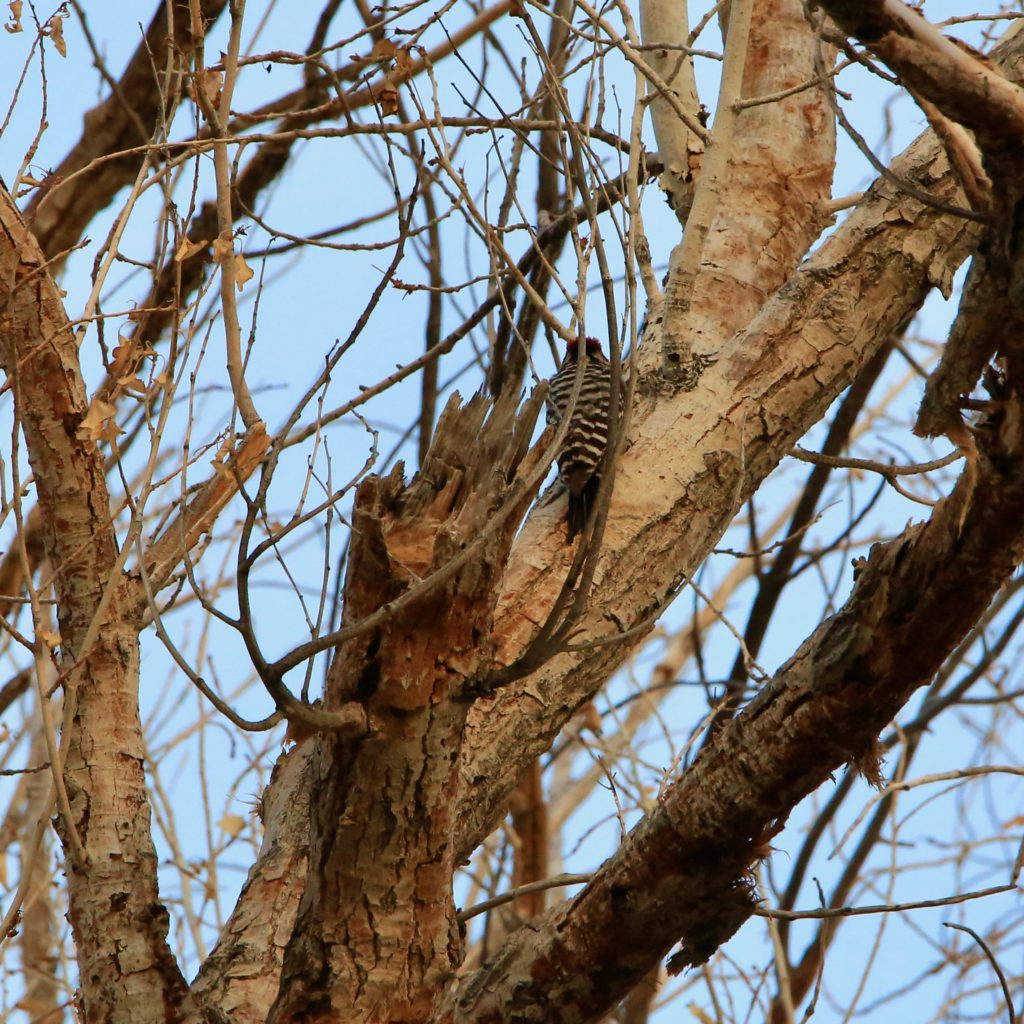
Ladder-backed Woodpecker
Ladder-backed Woodpeckers are a fun bird to see while bird watching. Below are some tips to help you identify Ladder-backed Woodpeckers. We have also put together a list of fun Ladder-backed Woodpecker t-shirts, Ladder-backed Woodpecker bird patches, birdhouses, bird feeders, binoculars, stickers, and other fun bird watching items.
About Ladder-backed Woodpeckers
The Ladder-backed Woodpecker is also known as the Cactus Woodpecker. This is because this bird species nests in cactus plants. The birds are often seen in pairs but can also form into small family groups of up to four birds. It is a sedentary bird species that can be found in a desert environment. It can also be found in the pinelands of Central America.
Description and Identification
These small black-and-white woodpeckers are around 6.3–7.1 inches with square heads, short necks, and a stiff tail that they lean against for support. Their check-patterned wings span to 13 inches approximately their small bills are straight and chisel-like. Sexual dimorphism is very minute between the sexes, with all adults having black-and-white
upperparts striped with ladder-rung-shaped markings on the back. The underparts are usually buffy white or grayish while being stippled with black. These colored traits are matched by their buffy white faces that are marked by black lines from the bill and eye till the neck. Adult males are characterized by their red crowns, a feature that is entirely absent in females. Males also tend to have stronger bills than females, a trait that is harder to observe with the naked eye.
Ladder-backed Woodpecker Size
- Length: the birds have an average length of 6 to 8 inches.
- Weight: a fully matured woodpecker weighs an average of 31 grams
- Wingspan: this bird species has an average wingspan of 10 to 12 inches
Ladder-backed Woodpecker Appearance
Its plumage is predominantly black and white, and the shoulders, back, and wings exhibit a barred pattern. The rump, as well as the cream-colored or buff-gray breast, belly, and flanks, also have flecks of black throughout. The pale sides display some dark markings as well.
The males sport red crown patches with black and white speckles. The Ladder-backed Woodpecker has a buff-gray nape, rump, and tail. The bill is somewhat pointed, and it is brown or gray-brown at hatching. As the bird reaches maturity, the bill turns a deep red. The females are smaller, and there is no red on their crowns. The juveniles of both sexes possess red crown plumage.
Ladder-backed Woodpecker Feeding
Like most woodpeckers, Ladder-backed Woodpeckers mainly eat insect larvae and adult
insects. Their hard bills are ideal for boring into the wood in order to excavate beetles,
leafworms, ants, caterpillars, and hemipterans. However, they rarely dig deep into the wood like
other woodpecker species and have not been observed to store food for late consumption
either. This leads them to forage for food in numerous other ways, such as picking,
probing, gleaning, prying, or tapping at prey with their bill. They are also uniquely acrobatic
and can sometimes be seen hanging upside down in search of food. When there is a
shortage of insects, they may also eat cactus fruit.
These birds usually forage for destructive insects and cacti fruit. The Ladder-backed Woodpecker also pries off barks of trees to look for insects.
Ladder-backed Woodpecker Habitat
Ladder-backed Woodpeckers are common in dry brushy areas and thickets. They occur in
thorn forests, deserts, and desert scrub from sea level to an altitude of around 7,600
feet. Very dry habitats are ideal for these birds, with the species using deserts with mesquite,
paloverde, catclaw, yucca, acacia, spiny hackberry, jumping cholla, and walkingstick cactus.
Desert-edge woodlands and riparian areas with cottonwood and willow are also regions
where these woodpeckers are frequently found. In the United States, this species is also
found in juniper and pinyon-juniper woodlands in the lowlands present in south-eastern
Colorado; smaller populations also occur further south in pine and pine-oak forests at an
the altitude of around 8,000 feet.
The Ladder-backed Woodpecker is often observed in dry, brushy areas and thickets. These areas include woodlands, desert scrub, and desert grasslands where it can find cacti.
Range and Migration
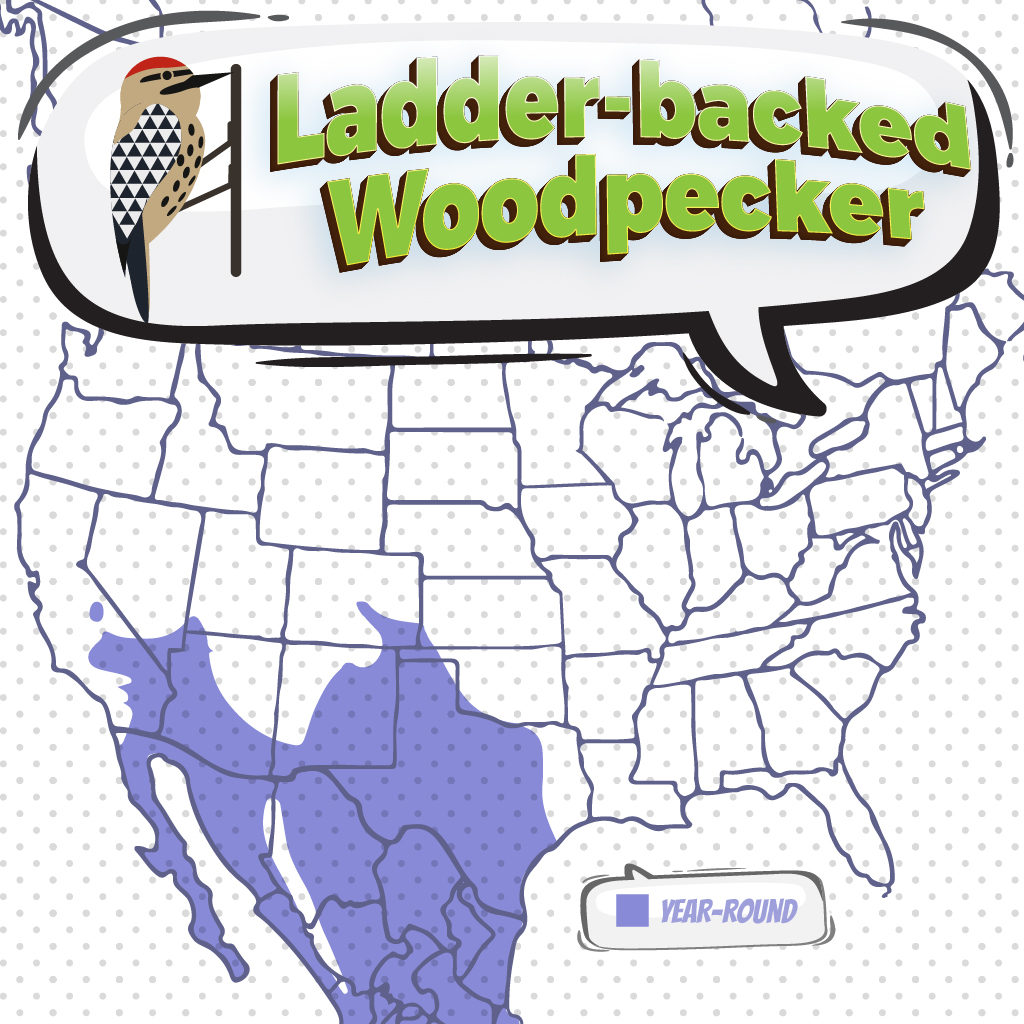
Once known as “Cactus Woodpeckers”, Ladder-backed Woodpeckers are quiet and agile
birds found throughout the deserts and thorn forests of Mexico, south-western United States,
and pockets of northern Central America. These birds are permanent residents of their
habitats and their range stretches from southern Nevada and Colorado to as far as southern
Nicaragua.
Ladder-backed Woodpecker Life and Behavior
It is not uncommon for pairs of this species of woodpeckers to remain together for more than one nesting season. The nest is built by both sexes 6 meters from the ground in a standing dead tree. The female lays an average of 4 to 6 white eggs each season. Both the male and female incubate the eggs for about two weeks. The young ones are looked after by both parents and leave the nest a month after hatching.
Ladder-backed Woodpecker Nesting
While facts about how nesting sites are selected are largely ambiguous, males undertake
most of the labor in excavating nest cavities due to their stronger bills. It is also unclear
whether nesting sites are selected jointly or by the males. Trees like Joshua tree, willow,
cottonwood, walnut, oak, hackberry, pine, mesquite, yucca, and agave are popular choices
for the woodpeckers to nest in, usually at a height of 2 – 30 feet above the ground. In urban
areas, their nests have also been found in old fence posts. The cavities are generally not
linked with any additional vegetation but may sometimes contain a few feathers.
Ornithology
Bird Watching Academy & Camp Subscription Boxes
At Bird Watching Academy & Camp we help kids, youth, and adults get excited and involved in bird watching. We have several monthly subscription boxes that you can subscribe to. Our monthly subscription boxes help kids, youth, and adults learn about birds, bird watching, and bird conservation.
Bird Watching Binoculars for Identifying Ladder-backed Woodpeckers
The most common types of bird-watching binoculars for viewing Ladder-backed Woodpeckers are 8×21 binoculars and 10×42 binoculars. Bird Watching Academy & Camp sells really nice 8×21 binoculars and 10×42 binoculars. You can view and purchase them here.
Ladder-backed Woodpecker T-shirts
If you love the Ladder-backed Woodpecker you should purchase a Bird Watching Academy & Camp T-shirt. To help support bird conservation we donate 10 percent to bird conservation activities.
Ladder-backed Woodpecker Iron On Patches
Kids, Youth, and Adults love to collect our Bird Watching Academy & Camp iron-on patches. Our bird-watching patches help you keep track of the birds you have seen and identified. You can also display the patches on our Bird Watching Academy & Camp banners.
The Ladder-backed Woodpecker is a great iron-on patch to start your collection with. The patches are durable and can be sewn on or ironed on to just about anything.
Ladder-backed Woodpecker Stickers
Stickers are a great way for you to display your love for bird watching and the Ladder-backed Woodpecker. We sell a monthly subscription sticker pack. The sticker packs have 12 bird stickers. These sticker packs will help your kids learn new birds every month.
Bird Feeders for Ladder-backed Woodpeckers
There are many types of bird feeders. Here are our favorite bird feeders for your backyard. We use all of these bird feeders currently. Kids will have a great time watching birds eat at these bird feeders. Using this collection of bird feeders will provide a wide variety and many types of birds.
Best Bird Houses for Ladder-backed Woodpeckers
There are many types of birdhouses. Building a birdhouse is always fun but can be frustrating. These 4 birdhouses have become our favorites. Getting a birdhouse for kids to watch birds grow is always fun. We spent a little extra money on these birdhouses but they have been worth the higher price and look great.


